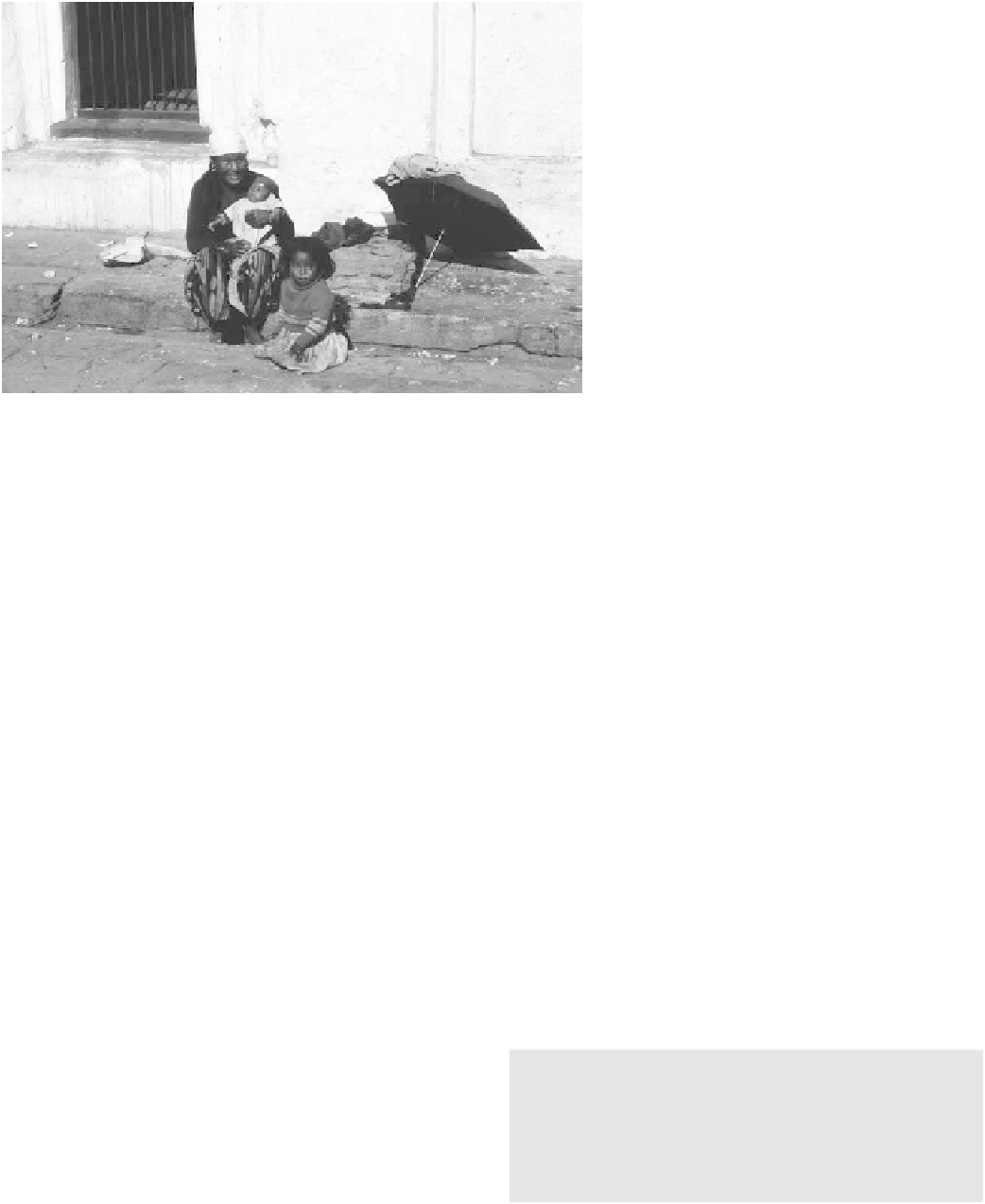Geography Reference
In-Depth Information
Figure 5-14
This Nepali woman and her baby live on this
small sidewalk space in Kathmandu. Her husband
has died and her family cannot afford to support
her , so she must beg for food. This is the side of a
small hotel where I stayed. The hotel will not
allow her to sit out front where she might “upset”
guests. In poor countries, many beggars try to
locate near hotels or even banks where they are
more likely to get donations.
Photograph courtesy
of B. A. Weightman.
Forest dwellers (hunters and gatherers and swidden
farmers)
Highland farmers
Women-headed households
Females in general
Migrant workers
duces grain supplies and consequently drives up prices of
carbohydrates. Therefore, the poorest people do without.
Communities define food security and poverty in
their own ways—and along many dimensions. Further-
more, the criteria will change markedly from one place to
another. A 2003 participatory assessment in the Federally
Administered T Tribal Areas in northwestern Pakistan indi-
cated four general categories of well-being (Table 5-3).
Clearly , there is a vast difference between those who
are well-off and better-off and those who are poor or very
poor. The first two groups have assets in land and live-
stock, a somewhat varied diet, and good health. The sec-
ond two groups have little if any assets, are usually
hungry , and lead unhealthy lives of deprivation.
Adapting to food insufficiency—eating more carbohy-
drates at the expense of protein, eating less, or not eating at
all results in dietary deficiencies, especially in
micronutri-
ents
. Micronutrients are vitamins and trace minerals that
are essential for chemical processes that ensure the sur-
vival, growth, and functioning of vital human systems.
People in poor regions of Asia frequently lack three key mi-
cronutrients: iron, vitamin A, and zinc. As a result, they are
at greater risk of illness or death from infectious diseases
and may not develop their full physical or mental potential.
ADAPTING TO HUNGER
The most general impact of food insecurity , and particu-
larly rising prices, is an increase in poverty . In Indonesia,
for example, each 10 percent increase in the price of rice
has been estimated to reduce the spending power of the
poorest tenth of the population by 2 percent. As any-
where that this is the case, people mortgage or sell their
assets, migrate elsewhere in search for work, or remove
children from school so that they can work to contribute
to household income. Parents may even give up their
children for adoption, or marry off their daughters early
to reduce the number of mouths to feed.
When households come under immediate pressure
as a result of rising prices or falling food supplies, the
first response is usually to change how they eat, consum-
ing less or different food. For instance, poor farmers in
Fujian Province on China' s southeastern coast reduced
their consumption of pork by 15 percent and of eggs by
20 percent in 2008.
The poorest people generally buy the cheapest avail-
able carbohydrates. However, as we have already dis-
cussed, rising affluence for some increases demand for
vegetables, fruit, meat, and dairy products. Farmers, there-
fore, feed more corn and other grain to livestock. This re-
Vitamin A and Blindness
The largest number of blind people in the world lives
in Asia. India has 15 million blind individuals with
another 52 million visually impaired. Cambodia has



















Search WWH ::

Custom Search